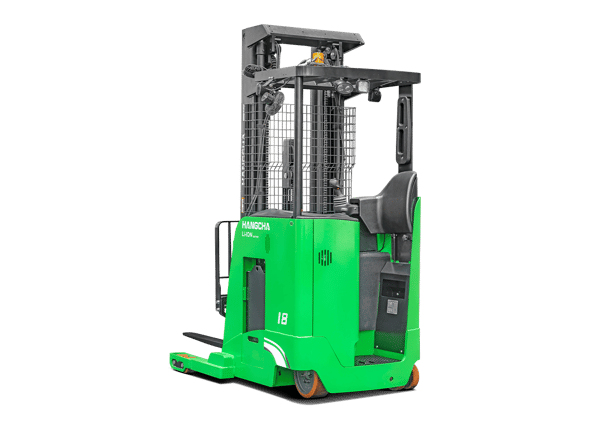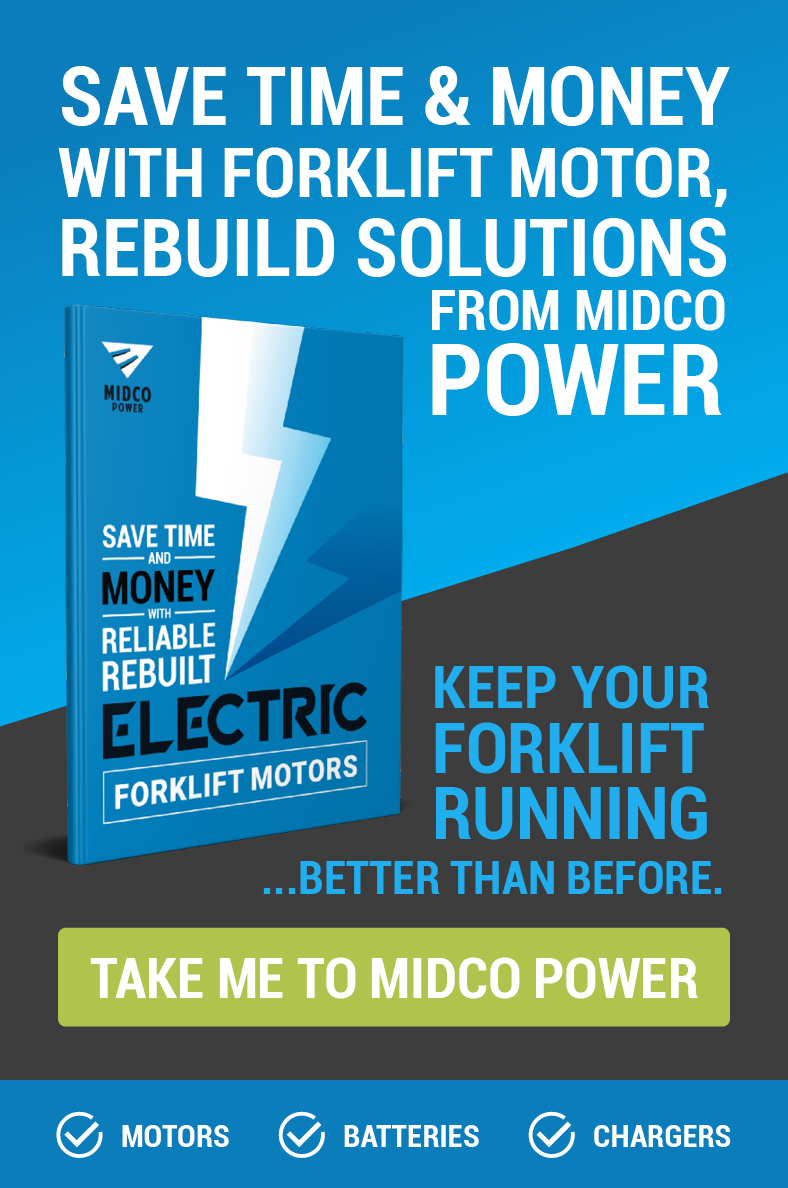Reach Truck vs Forklift: What’s the Difference?
by Shawn McQuary, on February 20, 2025 at 5:45 AM

A reach truck is always a forklift, but a forklift is not always a reach truck. Confused? We don't blame you! There are a lot of similarities between reach trucks and traditional counterbalance forklifts. However, reach trucks fill a niche in the warehouse ecosystem that counterbalance forklifts can't. Read on to learn the difference between reach trucks and counterbalance forklifts.
Reach Trucks Are a Type of Forklift
One of the biggest differences between a reach truck and a typical counterbalance forklift is the reach truck's ability to extend its forks forward using a hydraulic scissor-like device called a pantograph. The pantograph mounts between the forks and the mast and allows the truck to reach into racks to retrieve pallets.
Balanced, Not Counterbalanced
In the average forklift, a heavy weight sits on the rear of the vehicle. This weight counteracts the downward pressure of the fully loaded forks and keeps the truck’s wheels firmly on the ground. However, a reach truck does not have a counterweight. Instead, it uses a pair of wheeled base legs that extend beyond the front of the mast. The placement of these legs moves the reach truck’s center of gravity closer to the forks. This counteracts the tilting force of the loaded forks and removes the need for a counterweight.
Space Efficient
Losing the counterweight reduces the overall chassis size. This, combined with a narrower wheelbase, makes reach trucks more maneuverable than most counterbalance forklifts. Where your average forklift needs 10 to 12 feet of aisle space to operate, reach trucks need as little as 8 feet of aisle width to move freely.

Additionally, reach truck masts tend to be taller than their counterbalanced cousins. The extended masts allow these forklifts to access the taller racking structures common in narrow aisle warehouses. Their compact size and extended height make reach trucks excellent choices for facilities that need to maximize their existing space.
Lifting Limits
Counterbalance forklifts can lift enormous payloads thanks mainly to their counterweight systems. However, reach trucks have limited capacity because they lack of counterweight. Maximum loads vary by model, but the strongest reach trucks top out at about 4,500 lbs. Conversely, some counterbalance forklifts can lift loads over 100,000 lbs.
Indoor vs. Outdoor
Most counterbalance forklifts are available with pneumatic tires and other features that allow them to operate outdoors. Reach trucks, on the other hand, function best on solid, smooth ground, like the flooring of a warehouse.
Fuel Options
Counterbalanced forklifts are also available in a diverse array of fuel types. Most manufacturers produce models for all the major fuel sources:
- Electric
- Liquid propane gas (LPG)
- Diesel
- Gasoline
- Compressed natural gas (CNG)
- and even hydrogen fuel cells
Reach trucks are only available in battery-powered models. That said, they are zero-emission, clean-fuel vehicles that help preserve the air quality of your warehouse space. You can even get paid to charge warehouse equipment like reach trucks with the Washington Clean Fuel Standard & Oregon’s Clean Fuel Program.
Hangcha's 36V X-series lithium-ion reach truck has a 3000-4500 lb. capacity and comes with a 198″ full free lift 3-stage mast. It's designed to go all day and opportunity charge during breaks and shift changes.
Ergonomics
Typically, operators sit in counterbalanced forklifts. They utilize a steering wheel, gear shift, and pedals, much like a car. Consequently, their operator ergonomics are centered around a seated driver and typically include features such as an adjustable seat and steering wheel. Operators also tend to sit higher in these models, requiring steps and grab handles for entry.
Reach truck controls usually include a steering wheel, a joystick for acceleration and mast control, and an operator presence pedal (aka a deadman's pedal). The driver stands on this pedal while operating the truck. If the driver should ever step off, the Deadman pedal switch triggers, stopping the movement of reach truck and the reach truck ceases to function.

There are stand-up counterbalance forklifts, but these are less common. They are similar in design to reach trucks, but they lack a pantograph and base legs. Learn more about stand-up forklifts and when to choose a sit-down versus stand-up forklift.
Types of Reach Trucks
Within the category of reach trucks, there are four primary types. All of these include the general features described above.
- Single-reach trucks. These are the standard variety of reach trucks that include standard-length forks mounted on a pantograph.
- Double-reach trucks. These trucks are like single-reach trucks but have double-reach, allowing the operator to reach deeper into racking.
- Moving mast reach trucks. Unlike other reach trucks, these machines have the entire mast mounted on the pantograph, not just the forks.
- Multidirectional reach trucks. These trucks have pivoting wheels that allow them to move laterally as well as forward and reverse. This improves the maneuverability of the forklift.
When To Use a Reach Truck
Counterbalance forklifts are incredibly versatile machines that fill many roles in and out of the warehouse. Some models can lift nearly any size load, and a bewildering assortment of attachments expand their uses beyond simple pallet haulers.
Reach trucks are more specialized and designed for indoor warehouse applications. They are an excellent choice for facilities that place a premium on storage space since they maneuver well in narrow aisles and have taller masts.
Buy or Rent a Reach Truck in Washington State
Whether you're looking for a reach truck, stand-up or sit-down forklift (or any other type of material handling equipment) our local team has the expertise you need to find the perfect lift truck in your price range. To learn more about buying or renting a reach truck, contact us online or visit a Mid Columbia Forklift near you.
Auburn 253-854-5438
Pasco 509-547-7413
Wenatchee 509-663-9009
Yakima 509-457-5137
Further Reading
Forklift Rental Seattle: Why the Local Guys Do It Best
What Is the Washington Clean Fuel Act
How To Calculate Forklift Minimum Aisle Widths





